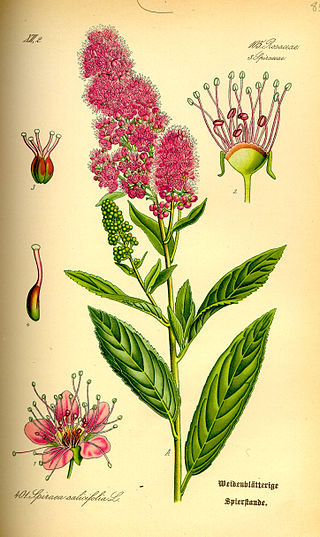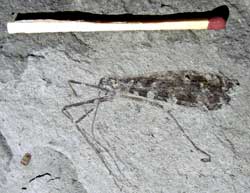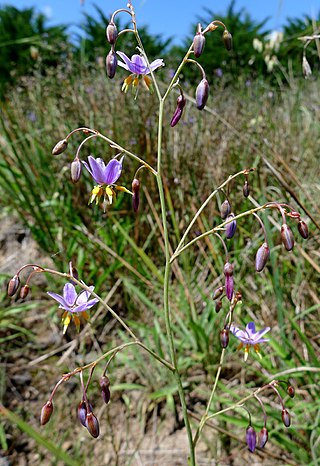Related Research Articles

Magnolia is a large genus of about 210 to 340 flowering plant species in the subfamily Magnolioideae of the family Magnoliaceae. The natural range of Magnolia species is disjunct, with a main center in east and southeast Asia and a secondary center in eastern North America, Central America, the West Indies, and some species in South America.
Paleoanthropology or paleo-anthropology is a branch of paleontology and anthropology which seeks to understand the early development of anatomically modern humans, a process known as hominization, through the reconstruction of evolutionary kinship lines within the family Hominidae, working from biological evidence and cultural evidence.

Spiraea, sometimes spelled spirea in common names, and commonly known as meadowsweets or steeplebushes, is a genus of about 80 to 100 species of shrubs in the family Rosaceae. They are native to the temperate Northern Hemisphere, with the greatest diversity in eastern Asia.

Clarkia is a genus within the flowering plant family Onagraceae. Over 40 species are currently classified in Clarkia; almost all are native to western North America, though one species is native to South America.

Pedicularis is a genus of perennial green root parasite plants currently placed in the family Orobanchaceae.
Byrsia is a genus of moths in the family Erebidae. Its type species is Byrsia dotata. Distribution of the genus ranges from Sundaland to the Solomon Islands.

Platystrophia is an extinct genus of brachiopods that lived from the Ordovician to the Silurian in Asia, Europe, North America, and South America. It has a prominent sulcus and fold. It usually lived in marine lime mud and sands.

The Artoriinae are a subfamily of wolf spiders. The monophyly of the subfamily has been confirmed in a molecular phylogenetic study, although the relationships among the subfamilies was shown to be less certain.
Dubyaea is a genus of Asian flowering plants in the family Asteraceae, primarily from China.

Changnienia is a genus of flowering plants from the orchid family, Orchidaceae. Only one species is known, Changnienia amoena, native to China.

Cimbrophlebia is an extinct genus of Mecoptera which existed from the Jurassic to the Eocene period.

Taranis is a genus of sea snails, marine gastropod mollusks in the family Raphitomidae.

Rogiera is a genus of flowering plants in the family Rubiaceae. It has 15 species and its native range is from Mexico to Colombia.

The Shanghai Botanical Garden is a botanic garden located in the southwestern suburbs of Shanghai, China, in the Xuhui District.

Vexatorella is a genus containing four species of flowering plant, commonly known as vexators, in the family Proteaceae. The genus is endemic to the Cape Floristic Region of South Africa. The name means “little trouble-maker”, given with reference to the initial difficulties of placing V. latebrosa within the family. All species are shrubs which occur in dry fynbos habitats on the fringes of the Succulent Karoo ecoregion. The inflorescences are similar to those of the related leucospermums but also share features of the leucadendrons, with the floral bracts becoming woody and enlarged following pollination. The flowers are insect-pollinated, with the seeds dispersed by ants (myrmecochory).

Phycella is a genus of herbaceous, perennial bulbous flowering plants belonging to the family Amaryllidaceae, subfamily Amaryllidoideae. The genus consists of five species distributed from central Chile to northwestern Argentina.

Rubramoena amoena is a species of sea slug, an aeolid nudibranch, a marine gastropod mollusc in the family Fionidae.

Stemonitopsis is a genus of slime molds in the family Amaurochaetaceae. First circumscribed by Norwegian botanist Elly Nannenga-Bremekamp in 1967 as a subgenus of Comatricha, she later elevated the grouping to generic status in 1975. The type species is Stemonitopsis hyperopta, which was originally described by Charles Meylan in 1919 as Stemonitis hyperopta.

Dianella amoena, commonly known as the matted flax-lily, is an endangered, herbaceous, perennial plant endemic to Australia. It belongs to the family Asphodelaceae, subfamily Hemerocallidoideae. It has long grey-green leaves which grow in clumps from an underground rhizome, and displays blue-purple flowers in spring-summer, up to 90cm in height. The common name Matted Flax-lily refers to its extensively rhizomatous nature, sometimes forming large mats up to 5m wide.

Rhinocladiella is a genus of fungi in the family Herpotrichiellaceae. It has 17 species. The genus was circumscribed by Swedish botanist John Axel Nannfeldt in 1934 with R. atrovirens as the type species.
References
- ↑ Lee, Cl. 1974; Some new species of Rhopalocera from China. IV Acta ent. Sinica 17 (2): 198-204
- "Sinonympha Lee, 1974" at Markku Savela's Lepidoptera and Some Other Life Forms